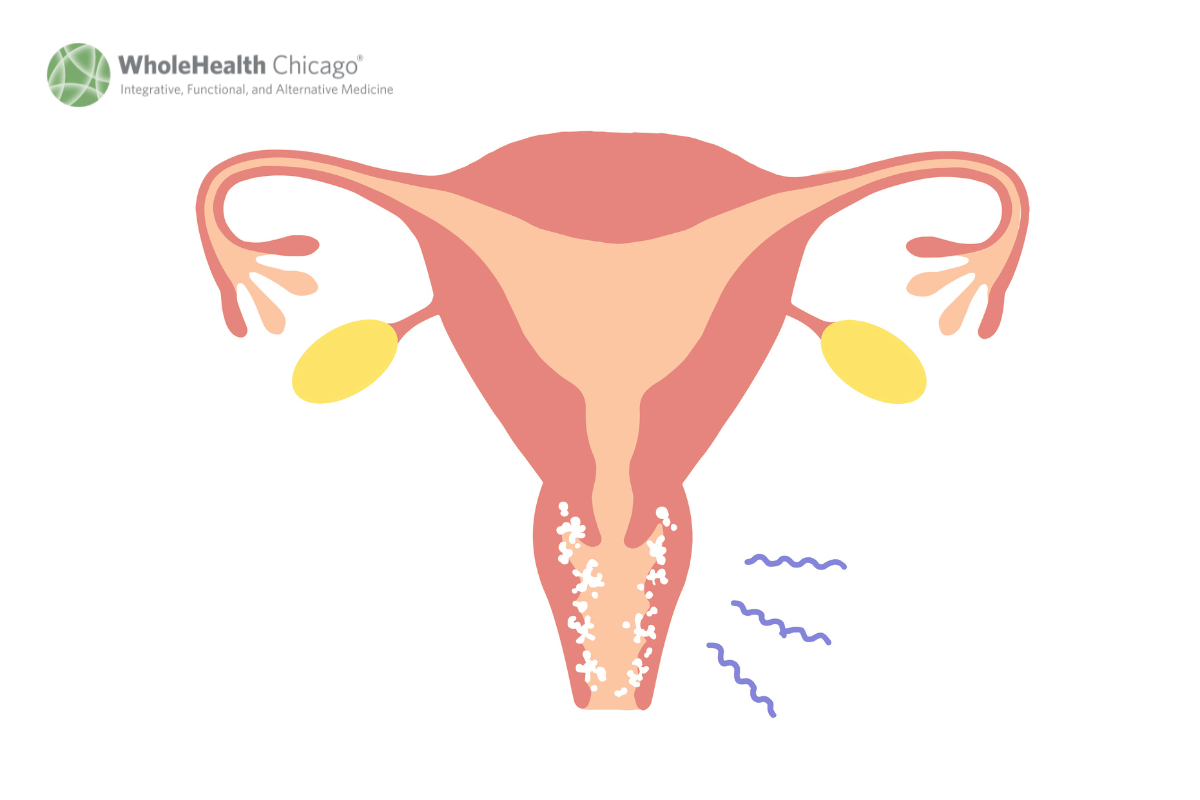If you recall, I spent last week’s Health Tip covering Candida (yeast infections), but when it comes to actual numbers, the very commonest vaginal infection is Bacterial Vaginosis (B.V. for short) triggered by one of several germs, the most frequent culprit being Gardnerella.
An assortment of bacteria is always lurking in your vagina, so B.V. is not really a sexually transmitted disease (STD) but pretty much occurs only in women who are sexually active. Rather, B.V. comes about in what might be termed a change in “your vaginal circumstances” that allow Gardnerella et. al. to proliferate and trigger B.V. symptoms. Such circumstances might be antibiotics suppressing “good bacteria”, a change in birth control, some well-intentioned douching, wearing spandex or nylon underwear, or a new sex partner. Symptoms may range from “none” (found by chance during your routine PAP), to a thin, greyish-white, itchy discharge.
Your healthcare practitioner can diagnose B.V. based on your symptoms, the appearance of your discharge, and an examination of that discharge under a microscope. The commonest prescription is an antibiotic, metronidazole, used as a vaginal cream or vaginal tablet. Boric acid suppositories, sold over the counter, have been used for almost 100 years and probably work just as well. I suggest the maintenance use of a good probiotic.
ALL THE OTHER VAGINAL INFECTIONS ARE STDs (Now more PC to call them STIs ‘sexually transmitted infections’, but they’re the same animal.) Sexual paranoia can be good for you. Hormonal shifts render you helpless to surging libidinal urges and things happen beyond your control. However, you can’t be too cautious when it comes to the old in and out. You can even buy condoms in the Red States.
The main reason for healthy paranoia is that with all three STD vaginal discharges, gonorrhea, chlamydia, and trichomoniasis, they can spread into your Fallopian tubes, infect them (“acute salpingitis” a/k/a “pelvic inflammatory disease” or “P.I.D.”). Then, years later it’s possible to find yourself sitting forlornly in the waiting room of a fertility center thinking about that tryst with that dude with the ponytail who operated the Ferris wheel at that carnival when it came through town. “All those years ago and now this.” If you’d only had a condom in your purse that night.
In their early stages, symptoms of gonorrhea, chlamydia, and trichomoniasis are similar. When mild, most people don’t even know they have anything or are spreading something to others. For men, gonorrhea worsens quickly, usually a day or two, with a painful pus-like discharge (“the drip”) and really painful burning when they attempt to pee. Women with gonorrhea may have some discharge, but their first symptom may be pelvic pain appearing after the bacteria has spread to their tubes. During the physical exam, you may experience very severe pain during your pelvic exam when the doctor moves your cervix. Since medical training was accompanied by hundreds of slang terms, this was called a “chandelier sign”, because the movement was so painful it made you reach up with both hands as if to grab a chandelier.
Chlamydia and trichomoniasis move more slowly and are often symptom-free, so they spread easily to multiple partners. This makes chlamydia the #1 STD, and “trich” #2, spreading to the Fallopian tubes as P.I.D.. Both can be passed to babies during pregnancy or childbirth. A chlamydia discharge is yellow, white, or grey and foul-smelling. Trichomonas is no prize-winner either, yellow, frothy, and foul-smelling as well.
Your best bet if you think that your vaginal infection might be a sexually transmitted event would be to go to an urgent care center unless you can get a prompt appointment with your gynecologist or PCP. We do have acute appointments available with most of our nurse practitioners as well. The antibiotic treatment for gonorrhea will cover chlamydia and vice versa. Trichomonas requires an antifungal called metronidazole, an oral version of the one prescribed for Gardnerella and you’ll need to take it for a week.
After you’ve finished your visit, head over to your nearest pharmacy for a package of condoms. Replace your condoms annually as they dry out.
What’s really good health care would be to schedule a Well Woman examination at any of our WholeHealth Chicago offices. Your exam would include your PAP as well as a full screening for STI (or STD, take your pick).
Be well,
David Edelberg, MD
